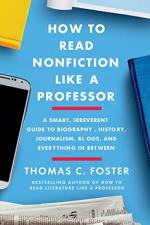
|
| Name: _________________________ | Period: ___________________ |
This quiz consists of 5 multiple choice and 5 short answer questions through Section 5: Chapter 16, "Social (Media) Disease" through "Conclusion".
Multiple Choice Questions
1. In Chapter 8, "Bringing the News," Foster maintains that types of newspaper writing like advice columns and human interest stories exist for what reason?
(a) Because readers can not live without them.
(b) Because they are traditional.
(c) To fill up space not needed for daily news.
(d) To sell newspaper advertising.
2. According to Chapter 17, "The Criminal Element," how did the tobacco industry react when news of the dangers of smoking was published?
(a) By refusing to abide by the Fairness Doctrine.
(b) By pulling back on American marketing and expanding overseas.
(c) By admitting that tobacco is dangerous.
(d) By committing scientific fraud.
3. In Chapter 16, "Social (Media) Disease," what does Foster say is the reason social media encourages people to have wide networks of "friends"?
(a) To mine data about your browsing preferences.
(b) To prove that social media is important to many people.
(c) To sell products to as many people in your friend group as possible.
(d) To increase sharing and advertising dollars.
4. In Chapter 3, "The Power of the Prologue," Foster mentions a "squib." What is a squib, in this context?
(a) A non-magical person born to wizards.
(b) A miniature explosive device.
(c) The misfire of a gun due to insufficient force.
(d) A short, satirical piece of writing.
5. Based on Chapter 14, "The Universe of Ideas/Ideas of the Universe," what would Foster call a neuroscientist reporting on and analyzing recent developments in neuroscience?
(a) Interrogation of text.
(b) Expert testimony.
(c) Amateur profiles.
(d) Journalistic compilation.
Short Answer Questions
1. In Chapter 8, "Bringing the News," Foster makes the point that during the Nassar scandal, the Lansing State Journal did what?
2. In Chapter 3, "The Power of the Prologue," why is "foreward" spelled with an "e" instead of as we usually see it, "forward"?
3. In Chapter 13, "On the Stump," what criticism does Foster level at Comey's book A Higher Loyalty?
4. Using an argument like "Democrats just want to take your guns" in an address to a gun rights organization in a heavily Republican area would be an example of which flaw in argumentation?
5. In Chapter 16, "Social (Media) Disease," what does Foster say the reader should keep in mind about sharing of stories on social media?
|
This section contains 534 words (approx. 2 pages at 300 words per page) |

|




